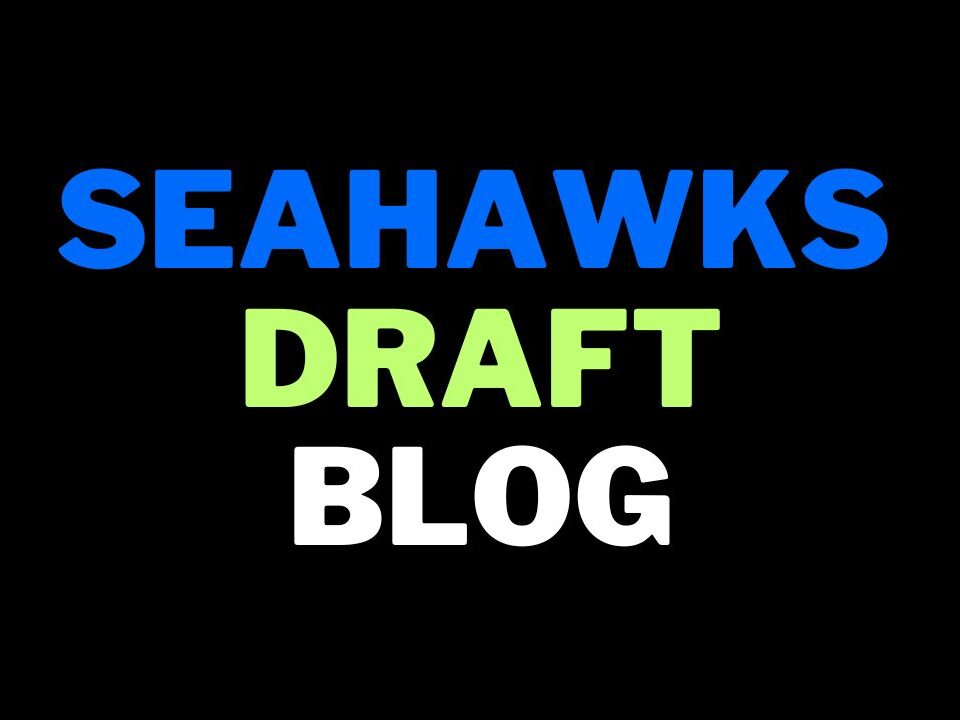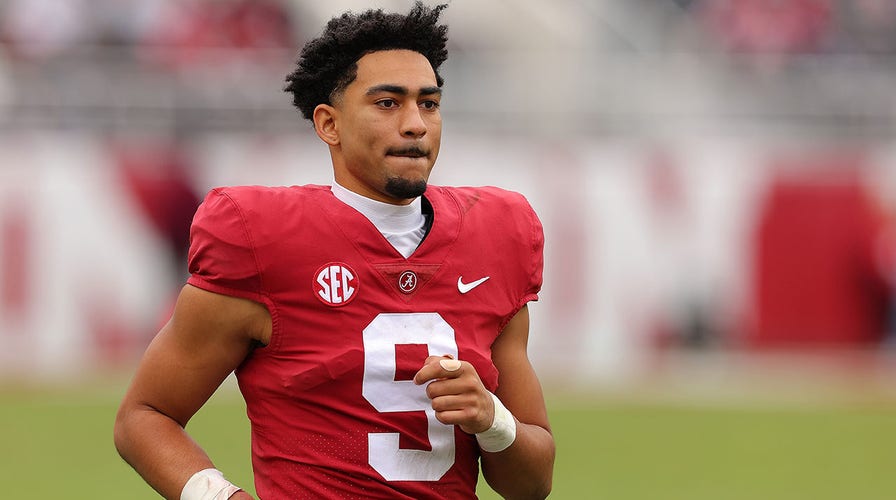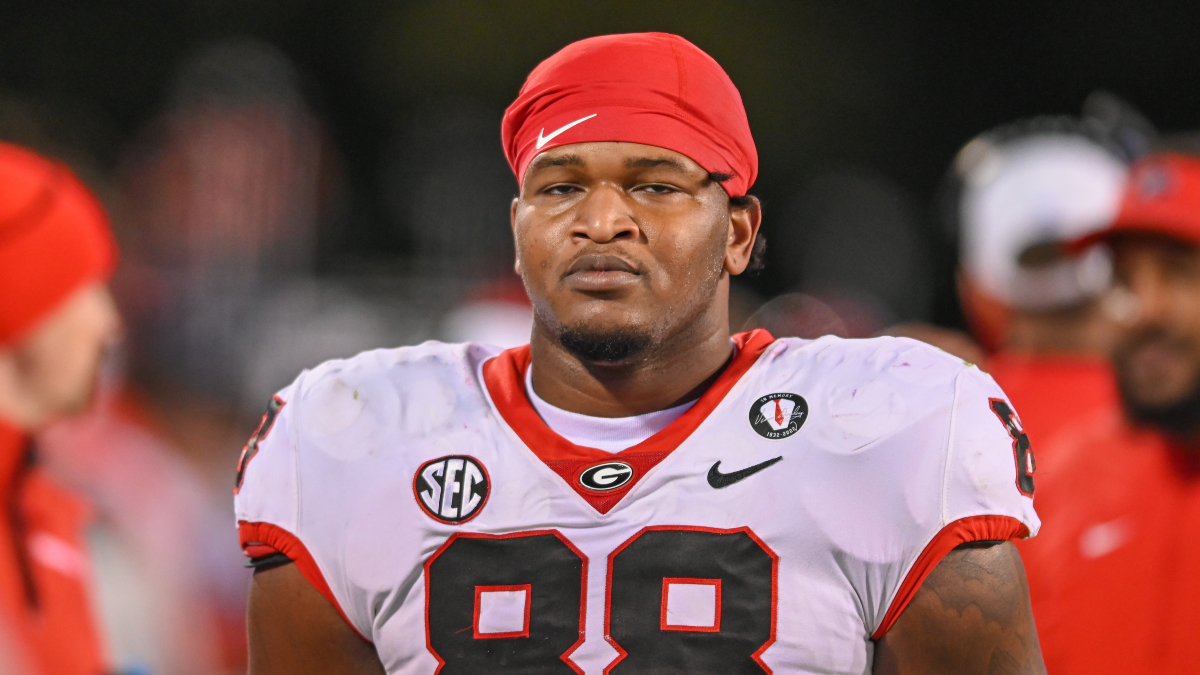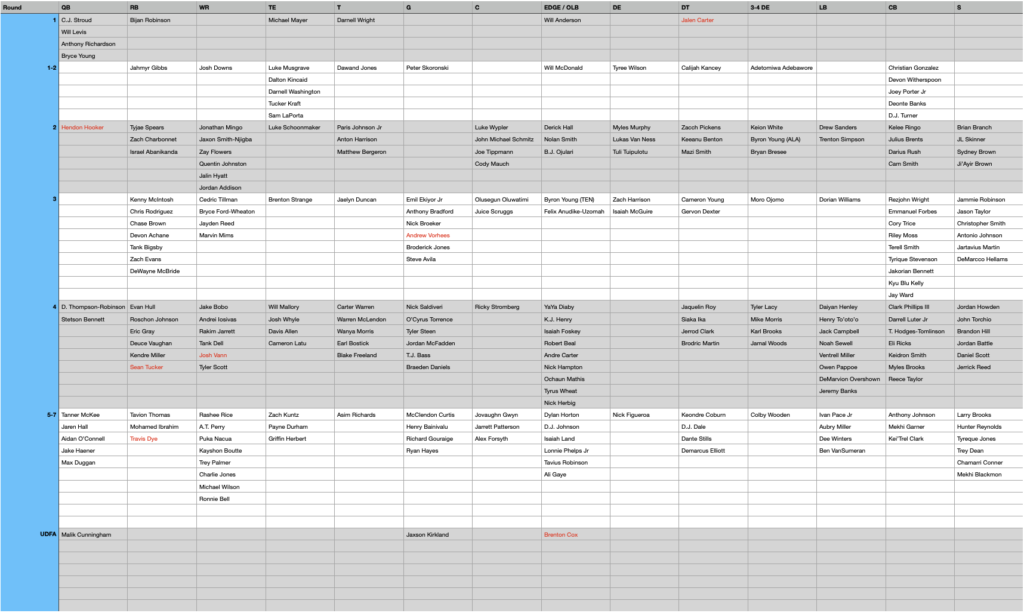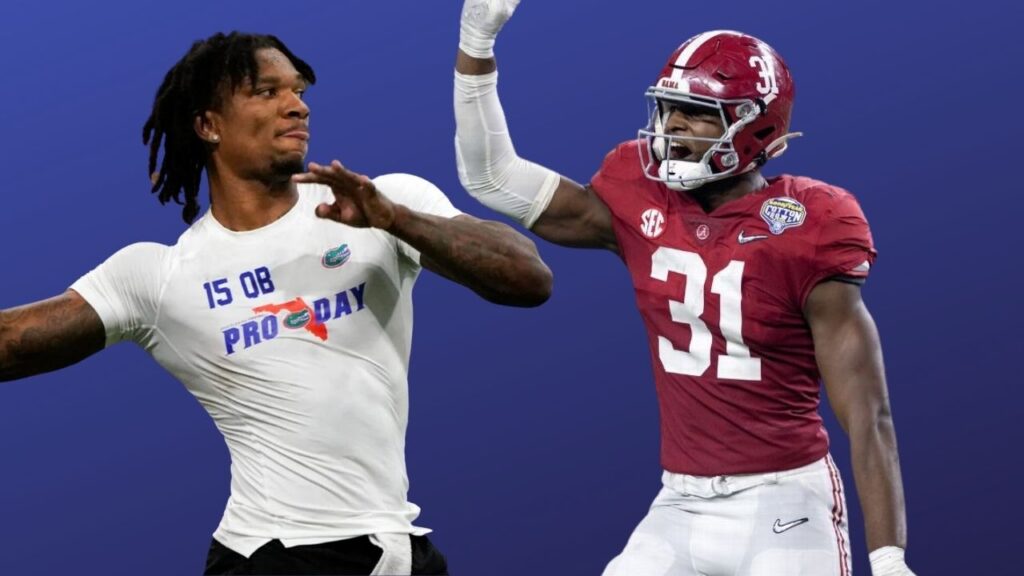
Will McDonald could be an ideal pass-rusher for Seattle
I promised a second go at producing a draft class for the Seahawks that would earn an A+ grade. You can see the breakdown of my first go at this by clicking here. Here’s the list of names in full:
Will Anderson (EDGE, Alabama)
Brian Branch (S, Alabama)
Jahmyr Gibbs (RB, Alabama)
Jonathan Mingo (WR, Ole Miss)
Luke Wypler (C, Ohio State)
Jaquelin Roy (NT, LSU)
Jordan McFadden (G, Clemson)
Corey Trice (CB, Purdue)
Tyler Lacy (DE, Oklahoma State)
Chris Rodriguez (RB, Kentucky)
Ventrell Miller (LB, Florida)
In this second attempt, I promised to draft a quarterback at #5. If one wasn’t available (as was the case in my previous attempt), I’d restart the simulation.
I used the Pro Football Network simulator for this article.
The top four picks were:
#1 Carolina — Bryce Young
#2 Houston — C.J. Stroud
#3 Arizona — Will Anderson
#4 Indianapolis — Will Levis
Tampa Bay offered a trade deal to come up from #19 but I rejected it.
Let me know what you think about this haul in the comments section. I’d give it an A+. Would you?
#5 — Anthony Richardson (QB, Florida)
I think there’s a very good chance the top four will play out as it did in this simulation, unless of course someone trades into the #3 spot. Adam Schefter reported today that six teams have inquired about the pick. That would leave the Seahawks with a decision. They can either invest in the long-term future at quarterback with a player so physically gifted he’s practically peerless in terms of upside. Or they can take the next available defender with Will Anderson off the board. For me, this would be a no-brainer. Draft Richardson, sit him for a year and let him learn the offense and what it takes to be a pro. He has the entire physical package to be a MVP candidate one day. I think it’s worth taking a shot to see if he can deliver on his potential. The upside of it working out is a decade of success, maybe more. If it fails, wasn’t it worth taking the chance anyway? How can you not be excited by the thought of Richardson throwing to D.K. Metcalf with Ken Walker in the backfield?
#20 — trade down
The Saints offered pick #71 to move up from #29. With Michael Mayer on the board I was tempted to stick and pick but getting a high third rounder to move down nine spots felt like a generous deal. New Orleans selected Quentin Johnston at #20.
#29 — Calijah Kancey (DT, Pittsburgh)
Mayer was eventually taken at #27, which was frustrating. I would’ve picked him at #29. Having taken a quarterback at #5, this felt like a good opportunity to try and add impact to the D-line. I understand and appreciate the concerns around Kancey’s length. With 30.5 inch arms, that’s worrying. There’s short arms and then there’s short arms. However, watching him on tape is quite an experience. You go in promising yourself you won’t compare him to Aaron Donald. Then you watch Pittsburgh and you feel like you’re watching Aaron Donald. His pass-rushing skill, quickness, twitchy ability to avoid blocks, exquisite hand-use, raw speed and agility is just so reminiscent of Donald. I appreciate you can’t make a ton of exceptions but in the case of Kancey, I’m prepared to take a chance on the length not being an issue. Nobody will ever copy what Donald has achieved in the NFL. He’s a legendary player. Yet Kancey’s testing profile and playing style is so similar, it feels like a worthy gamble to see if you can even get 65% of what Donald has been. Seattle hasn’t had an impact pass-rusher in the trenches in a long time. Kancey can be that man.
#37 — Will McDonald (EDGE, Iowa State)
As soon as I saw McDonald was still on the board, I took him immediately. The thought of adding Kancey and McDonald to the pass-rush is mouth-watering and shows you don’t have to take a defender at #5 to upgrade the defense. He’s perfectly suited to Seattle — with 35-inch arms, exceptional balance and bend around the arc (the best I can recall), heavy hands despite his lack of great size and counter moves and savvy to keep blockers guessing. At the Senior Bowl, he had Darnell Wright on toast. Wright is the best tackle in the draft. He shut down Will Anderson when Tennessee played Alabama. McDonald beat him in back-to-back reps in the 1v1’s easily, then did it again in a scrimmage session. There’s every chance he can be Seattle’s answer to Brian Burns. You can super-charge your pass-rush by adding Kancey, McDonald and Dre’Mont Jones this off-season. This would be an immensely exciting start to the draft. One other thing to note, new pass-rush specialist BT Jordan spent time training McDonald before being appointed by the Seahawks.
#52 — Jonathan Mingo (WR, Ole Miss)
Our own Curtis Allen requested I don’t repeat picks in this projection but I’d already completed the sim. I also think this pick, in this range, is an easy way to secure an A+ grade. I rate Mingo as the second best receiver in the draft. He has a good frame (6-2, 220lbs) with enormous 10.5 inch hands and he runs in the 4.4’s. He’s a perfect ‘big slot’. The Seahawks experimented with a bigger slot receiver last year with Laquon Treadwell. What does he do well? His routes are extremely precise and he’s nearly always where he needs to be on time. Mingo has soft hands and is adept competing for the ball in the air or tracking it over his shoulder. He has enough speed to get downfield and make the big explosive play, plus the size to box-out and win with physicality. He can also make the spectacular happen — such as a stunning one-handed grab downfield last season or the best ‘Moss’ we saw in 2022. As a blocker, he has no peer in this receiver class. If you want your receivers to block — this is your guy. He loves to get after it. I’ve been promoting Mingo for a long time and believe he’s a top-50 player who could go a lot earlier than people think and in this range, he’d be a home-run pick.
#71 — trade up
Part of the reason I traded down to get this pick in the first place is to create some flexibility to trade up later on. I haven’t addressed the center position yet and I want to make an investment there for the long term. Therefore, I call the Bears. They have the #64 pick. I offer a fourth rounder (#123) to move up seven spots. It’s expensive, granted. But I’m worried about Arizona getting my target at #66. They haven’t addressed center yet and I want to jump them.
#64 — Luke Wypler (C, Ohio State)
Another repeat pick from the last mock but there are really two key players at center who fit Seattle’s physical profile — John Michael Schmitz and Wypler. I’m convinced one of the two will be a Seahawk. Wypler has the traits for the blocking scheme. He’s athletic and agile — running a brilliant 4.53 short shuttle. He has a wrestling background which they like. He had a tremendous game against Georgia in the college football playoffs. He said at the combine he’d already started studying the Rams blocking scheme because it fit him so perfectly — so he’s already well versed in Seattle’s system. This pick would give the Seahawks a chance to have a settled center position for the first time in years.
#83 — trade down
Trading up was expensive so I wanted to try and get a pick back. Jacksonville offered a deal to move up from #88. It involved a fifth rounder next year. I wanted a pick in 2023, so I countered for a fifth this year. That offer was rejected. I went back and offered to swap my seventh round pick (#237) for their fifth rounder (#185). That was accepted.
#88 — Israel Abanikanda (RB, Pittsburgh)
With ideal size for the Seahawks (5-10, 217lbs) and an explosive testing profile (41-inch vertical, 10-8 broad) — he’s what they look for at the position. He also has the speed to be a home-run threat and can plant and burst to accelerate through gaps to deliver chunk-yardage. He’d create a terrific 1-2 punch with Ken Walker, with Deejay Dallas taking on third down duties. This would be a home-run pick, providing great value and early impact potential. With Mingo, Wypler and Abanikanda — the offense would be more or less complete for 2023. You’d have an extremely athletic, exciting group. Then you throw Anthony Richardson into the mix in 2024 or 2025. What a thought.
#151 Corey Trice (CB, Purdue)
My final repeat pick — but I just like him so much for Seattle. He’s an excellent cornerback prospect with fantastic size (6-3, 206lbs, 32.5 inch arms) and he runs well (4.47 forty). He’s quite scheme specific but screams ‘Seahawks’. He wants to be physical and scrappy in coverage. On any dump-offs and screens he does a great job getting off blocks to hammer ball carriers. He reads plays better than most other cornerbacks in this class — often making the right decision to gamble to undercut a route or passing off the correct receiver. There’s so much potential here and if he’s available in this range, he could compete very quickly to play outside across from Tariq Woolen.
#154 Jay Ward (S/CB, LSU)
Ward would be a tremendous pick in this range. He’s an A+ alpha and highly regarded by his team mates. He has positional versatility having played safety and nickel. He actually has the frame and length to be tried at outside corner by the Seahawks. He could be a special teams demon as a rookie and then settle into a permanent role at safety, nickel or cornerback from 2024. He loves to hit, he’s good against the run, he has 32.5 inch arms. There’s a ton to work with here.
#185 Anthony Bradford (G, LSU)
The combine really brought Bradford and Alabama guard Emil Ekiyor to my attention. I thought they both looked excellent. I then went and reviewed their tape and I think both players are being slept on. I think it’s very unlikely Bradford will last to this range and he’ll likely go in the fourth round area. However — I think there are some really good guards and tackle-to-guard converts set to be available on day three. Bradford is 6-4 and 332lbs with 33.5 inch arms. He’s an explosive tester, scoring a 3.17 in TEF and a superb 105.2 in weighted TEF. If they want to stick with bigger, more explosive guards (and they might do, given Damien Lewis and Phil Haynes are set to start this year) then Braford fits that profile perfectly. He can be a quality backup in year one and potentially take over as a starter in year two, with both Lewis and Haynes only contracted until the end of 2023.
#198 Keondre Coburn (NT, Texas)
With the way John Schneider spoke about the nose tackle position last week, it made me think they might be prepared to wait on this position and just get someone who has shown they can handle early downs and anchor. Coburn is big (6-2, 332lbs) but has short arms (31.5 inches). That could be off-putting for Seattle but they have shown a willingness to come off ideal traits in the late rounds. Coburn is strictly an early-down nose but he does the job well and he can two-gap. He’s basically an ideal option for Seattle apart from the arm length. If he’s available in round six, it might be a very easy decision to take a chance on him filling the void left by Al Woods.
The class in full
Anthony Richardson
Calijah Kancey
Will McDonald
Jonathan Mingo
Luke Wypler
Israel Abanikanda
Corey Trice
Jay Ward
Anthony Bradford
Keondre Coburn
Final thoughts
I think there’s a lot to like here. You get a long-term investment at quarterback and take a player with limitless potential for the future at the most important position in the sport. Meanwhile, you’re still able to add two impact defenders to your front seven — creating a scary looking group when you combine Calijah Kancey and Will McDonald with Dre’Mont Jones, Uchenna Nwosu, Darrell Taylor, Boye Mafe and Jarran Reed. There’s youth and talent here to be good for a long time and finally fix Seattle’s pass rush.
You also fill needs at center, WR3 and RB2. You now have excellent club control on those three positions, plus LT1, RT1 and RB1 — all drafted last year.
On day three you add two exciting, physical, athletic defensive backs to increase competition there, before drafting a guard who can be a quality backup in 2023 and a possible starter in 2024. You finish things off with a nose tackle who has been durable and effective in a two-gap system.
Again it’s disappointing to miss out completely on a talented tight end class and it’s tricky to add a young linebacker — although that’s less of a desperate 2023 need with Bobby Wagner and Devin Bush both signed.
I challenge anyone to see this as a disappointing draft, unless you’re stubbornly opposed to Anthony Richardson or the concept of drafting a quarterback early. This draft highlights how you can have the best of both worlds. This can be an impact class who help drive you on in 2023. It can also be a draft that produces a potential long-term franchise quarterback.
It’s different to the previous draft in the positions it ticks off early and the overall strategy. I think both work and it shows a path to success whether you take Will Anderson or Anthony Richardson with the fifth pick. It’s one of the reasons why I’ve focused on those two players and feel very comfortable with either.
Finally today, I wanted to react to Peter King’s latest article which includes the following line:
Georgia defensive tackle Jalen Carter is due to visit two teams in the top seven, Seattle (five) and Las Vegas (seven), in the coming days. How can Vegas GM Dave Ziegler and Seattle GM John Schneider finish their evaluation of Carter before sitting down with him at length? They can’t. So if you hear, “Carter’s out in Seattle,” for instance, it’s just not feasible.
Adam Schefter has since added that Carter will visit Seattle tomorrow.
Firstly, this is absolutely the right thing to do. This is what the official-30 visits are for. Schneider made that point on 710 Seattle Sports. They typically use these meetings to complete evaluations on players they’re not sure about, including where there are character questions. It’s why certain players have a lot of visits and others, such as Josh Downs (one of the cleanest players in the draft), have zero.
Carter’s agent recently announced he would only visit with teams picking in the top-10. The Seahawks had to take advantage of that. It’s an opportunity to hear his side of the story, get to know him and spend some time with him in the facility.
That said, it doesn’t really change anything. A case in point. Let’s say the Seahawks have no interest in drafting Carter in the first round. What if he then falls to the second round due to his character concerns? You’d be kicking yourself for not completing the evaluation.
What if he’s available down the road? Via trade or as a free agent? Don’t you want the information to make an informed decision?
While I appreciate King noting that no boards are complete, it’s also worth pointing out that the Athletic reported on March 30th that Carter was off the Raiders’ board. He’s also having an official visit to Las Vegas, per King’s report. Josh McDaniels refuted the report but that information was still put out there (and there’s every reason for a coach, when quizzed about it, to deny it).
I’d guess the Seahawks have a pretty good idea about whether they’re prepared to draft Carter before this meeting. I’d argue it’s equally not feasible to think things hinge on tomorrow’s get-together. Yet having the luxury of being one of only 10 teams to actually host him for a visit, it’s a completely worthwhile exercise.
There was one other line in King’s article that I think was even more interesting:
I think Jalen Carter could be drafted fifth or 25 and I wouldn’t be surprised.
And that, right there, sums it up. There wouldn’t be a chance of him lasting that long unless the concerns were legit.
I stand by everything I’ve written about the likelihood of Seattle drafting Carter. If I’m wrong, I’ll front up and own it. I still think the most convincing point anyone has made on this subject so far is — if Kayvon Thibodeaux wasn’t a first round consideration a year ago, as reported by Dave Wyman, why would Carter be considered this year?
One thing I think we can all agree on — April 27th can’t get here soon enough, so we can finally talk about what did happen, rather than what might happen.
If you enjoy the blog and appreciate what we do — why not consider supporting the site via Patreon — (click here)
